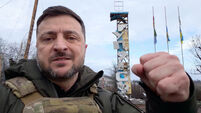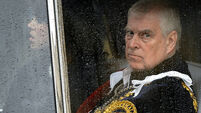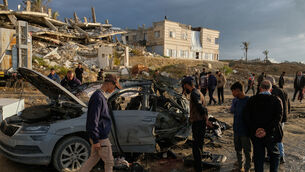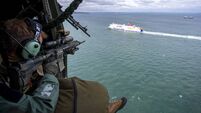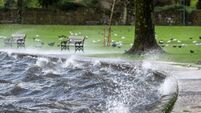Europe celebrates VE Day
Solemn commemoration services and street parties drew huge crowds today as Europe celebrated the 60th anniversary of Nazi Germany’s defeat and the end of the continent’s most devastating war.
French President Jacques Chirac and German Chancellor Gerhard Schroeder attended ceremonies in their countries to mark the close of World War II in Europe.
Thousands of people, including Spanish Prime Minister Jose Luis Rodriguez Zapatero, travelled to a former Nazi death camp in Austria to mark its liberation.
Russian veterans gathered in Moscow to prepare for celebrations on Monday to be attended by dozens of foreign leaders, including Bush.
Russia paid the heaviest price of any nation for Adolf Hitler’s aggression, losing some 26 million soldiers and citizens.
Around six million Jews were murdered during World War II, which cost some 50 million lives in total.
In Berlin, Schroeder and German President Horst Koehler attended a cathedral service ahead of a wreath-laying ceremony at a memorial to victims of Nazism and war.
Most Germans consider Hitler’s defeat to have liberated them as well as the rest of Europe from the terrors of Nazism.
But hundreds of supporters of an extreme-right party planned to protest the “cult of guilt” they say was imposed on the nation after Germany’s surrender.
Berlin police stepped up security ahead of the National Democratic Party march which gathered several hundred young men in black with shaven heads, some carrying flags in red, white and black – the colours used by the Nazis and imperial Germany. Organisers said they expected up to 4,000 marchers.
The Nazi capitulation was signed the day before in Reims, France, a week after Hitler committed suicide in his Berlin bunker. World War II raged on in the Pacific until Japan’s surrender on August 15.
At the Arc de Triomphe in Paris, Chirac laid flowers at the Tomb of the Unknown Soldier watched by troops from the many nations that united to crush Hitler. They included Australia, Belgium, Britain, Canada, the Czech Republic, Greece, Luxembourg, the Netherlands, New Zealand, Norway, Poland, Russia, Slovakia and the US.
Jets flew over the graceful tree-lined Avenue des Champs-Elysees, streaking the sky with red, white and blue smoke – the colours of the French flag.
At the former Mauthausen death camp in Austria, thousands took part in a ceremony to remember some 100,000 inmates killed by the Nazis there. It was the last big Nazi death camp still operating when the US Third Army’s 11th Armored Division arrived in early May 1945.
About 6,000 of the camp’s victims were Spaniards, enemies of fascist Spanish leader Gen. Francisco Franco. Spain’s Zapatero paid tribute to them at the camp Sunday.
“As prime minister of the government of a democratic Spain, I want to pay homage, remember and express my admiration for all Spaniards who suffered in this concentration camp in its fight for freedom and dignity,” Zapatero said.
Poland’s main VE Day celebrations took place on Saturday in the western city of Wroclaw. Today Prime Minister Marek Belka paid homage to soldiers who fought in WWII in a ceremony before Warsaw’s Tomb of the Unknown Soldier.
Belka also referred to Monday’s ceremonies in Moscow. For Poles, the end of Nazi oppression marked the start of decades of often brutal Soviet rule.
“A ceremony in Moscow will pay homage to all soldiers of the anti-Hitler coalition,” Belka said.
“We want to believe that honest words of truth will be spoken there, about heroism during the war but also about betrayal and enslavement of the post-war years.”






